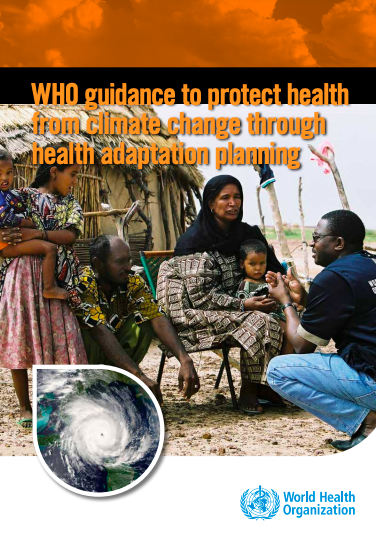The assessment concluded that 39 out of 41 (95%) NAPAs identified health as a priority sector negatively impacted by climate change. Thirty out of 41 (73%) of the NAPAs identified health interventions within their list of adaptation needs and proposed actions.
While 11% (50 out of 459) of the priority projects focused on health, only approximately 4% of the portfolio of the Least-developed Countries Fund (LDCF) funds supporting the NAPA process targeted health adaptation. Potential explanations for this lack of support for health sector adaptation include that the health community was largely absent from the NAPA process; the health sector did not submit proposals to the LDCF; and the limited technical guidance that was made available to ensure the proposals on health adaptation that were developed fulfilled minimum technical requirements.To achieve the goals of healthy people in healthy communities, it is critical that the health sector is properly represented in the NAP process.
Not including the health sector in adaptation planning can miss critical actions to protect population health, and can result in policies and programmes in other sectors inadvertently causing or contributing to adverse health impacts, thereby also undermining efforts to protect the environment. Furthering participation of the health sector will facilitate access by the health sector to national adaptation funds made available through the LDCF, adaptation fund (AF), green climate fund (GCF), and other funds.
Coordination will also ensure that the health sector maximizes synergies and promotes health co-benefits across health determining sectors, such as energy, agriculture, housing and water. The health national adaptation process (HNAP) should be the health component of the National Adaptation Plan (NAP), including as an output a detailed health adaptation plan designed to achieve the national health adaptation goals within a specific period of time and given available resources.




